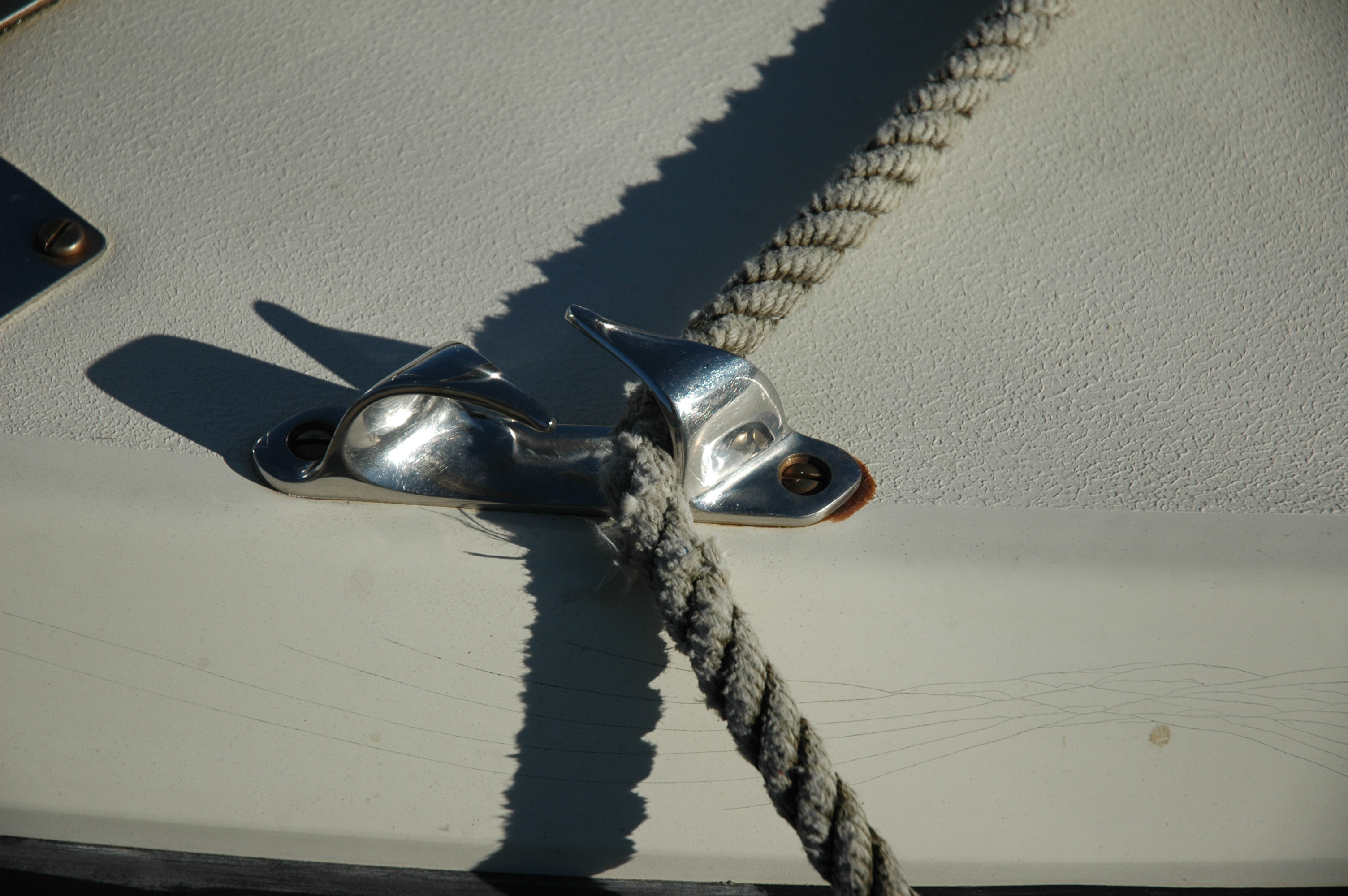Is it a Fair Lead?
By Dag Pike
The name fairlead says it all. Does this fitting on your yacht allow a rope passing through a fairlead a comfortable passage with no chance of chaffing? You get fairleads all around the boat, but mainly at the bow and stern so that mooring ropes can be lead through them from the mooring post on board usually down to the mooring cleat on the quay or pontoon. So the fairlead should be designed to allow the rope to change direction without having to have sharp bends and sharp edges.
A Fixed Fairlead
It all sounds good but have a look around almost any marina and see what the reality is. In its simplest form, a fairlead is a metal plate with two horns that curve upwards to contain the rope. A fixed fairlead like this will certainly hold the rope as it passes through, but a lot of its effectiveness will depend on how sharp is the bend in the rope.
A sharp bend can reduce the strength of a rope by as much as a third because the effectiveness of a rope depends a great deal on the rope having no acute bends. Then with that fixed fairlead, the rope can rub against the metal where the rope bends. So if there is any movement in the boat, say when it is affected by the wash of a passing boat, that rope will chafe against the metal.
So no bonus points for that type of fairlead design, which is a common fitting on many boats because it is the cheap alternative. What should a good fairlead be like? Well to be effective and to reduce chafe, the rope should pass over rollers rather than a fixed piece of metal. The best type of fairlead is probably one where there are both horizontal and vertical rollers so that the rope runs over rollers whichever way the rope leads. With a roller, this turns if the rope moves backward or forwards. So there is much less of a problem with chafe and the rope will last a lot longer because chafe weakens the rope.
Today, we are seeing a lot of interesting fairlead designs that clearly demonstrate that the designer has no idea how a fairlead is meant to work. Designers want the boat to have a well-integrated look and so we are seeing fairleads specifically designed for specific boat design. This means that they integrate cleanly into the boat structure and do not look like add-ons.
Sharp Edges
The problem is that with this integration, the design often leaves sharp edges that the rope has to run over. You might have a pair of vertical rollers that help to guide the direction of the rope in a literal sense. But then these are mounted on a stainless-steel plate that has no roller, and possibly quite a sharp edge when the rope has to lead downward.
That sharp edge will probably not be a problem if the boat is just being left overnight. However, if this is your permanent berth and the boat can move about a bit when it is at the mooring, then this can be the perfect place for chafe to start. Sharp edges love eating into the fibers of a rope and with some movement of the boat -- it is a bit like a knife sawing into the rope. Good mooring ropes do not come cheap, and allowing a rope to chafe can be an expensive mistake, let alone the risk of rope failure.
A Solution
The simple but not very pretty solution is to wrap a bit of cloth around the rope and let that take the chafe. It could do the job in the short term. But it is not a long term solution and a more long-lasting solution can be to split a piece of plastic piping so that it can be slid over the rope and secure this in position over the potential chafe area. That could be the best solution if you are leaving the boat for any length of time on a mooring where the boat can be subject to movement. Again, it is not pretty but you are forced to take these sorts of steps because the designer has not done his job properly, or more likely does not understand the problem because he doesn't have the operating experience.
It is sad to see this type of situation on quite a few modern boats. It is part of a general trend where how the boat looks is the important factor, not how practical the boat is. What I don’t understand is why the two factors cannot go hand in hand. Why can’t we have boats that look good with a nice integrated design, and at the same time be practical and follow the requirements of good seamanship? It is not a big ask but I do wonder why both designers and builders can make it quite a challenge to tie a boat up alongside these days.

